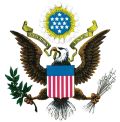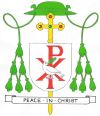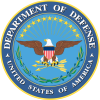23rd Bombardment Squadron, US Air Force
23RD BOMBARDMENT SQUADRON, US AIR FORCE
History: Organized as 18 Aero Squadron on 16 Jun 1917. Redesignated as 23 Aero Squadron (Repair) on 22 Jun 1917. Demobilized on 22 Mar 1919. Reconstituted, and consolidated (1924) with 23 Squadron, which was authorized on 30 Aug 1921, organized on 1 Oct 1921, redesignated as 23 Bombardment Squadron on 25 Jan 1923. Redesignated as: 23 Bombardment Squadron (Medium) on 6 Dec 1939; 23 Bombardment Squadron (Heavy) on 20 Nov 1940; 23 Bombardment Squadron, Heavy, on 6 Mar 1944; 23 Bombardment Squadron, Very Heavy, on 30 Apr 1946. Inactivated on 10 Mar 1947. Redesignated as 23 Reconnaissance Squadron, Very Long Range, Photographic, on 16 Sep 1947. Activated on 20 Oct 1947. Redesignated as: 23 Strategic Reconnaissance Squadron, Photographic, on 16 Jun 1949; 23 Strategic Reconnaissance Squadron, Heavy, on 14 Nov 1950; 23 Bombardment Squadron, Heavy, on 1 Oct 1955; 23 Bomb Squadron on 1 Sep 1991.
Repaired and maintained aircraft and engines, 1917–1918. Bombed lava flowing from Mauna Loa, diverting it from the city of Hilo, Hawaii, 27 Dec 1935. Patrols over the Pacific, 8 Dec 1941–Nov 1942; 26 Aug–18 Oct 1943. Awarded the Presidential Unit Citation (PUC) for service in Southwest Pacific, [1-9] Dec 1942. Combat in South, Southwest, and Western Pacific, 27 Apr–16 Aug 1943, 22 Oct–6 Dec 1943, 22 Jan–1 Mar 1944, 18 Apr 1944–12 Aug 1945. Awarded Distinguished Unit Citations (DUCs) for performance at Woleai Island, 18 Apr-15 May 1944 and Borneo, 30 Sep 1944. Non–operational, 1946–1947. Photo-mapping in the Philippines, Formosa, and Southwest Pacific, Nov 1947–Mar 1949. Performed strategic reconnaissance, 1949–1952. Assumed a strategic bombardment mission in 1953. In 1959, completed conversion to B-52 bomber aircraft; supported Air Reserve and Air National Guard programs and participated in disaster relief and other domestic emergency programs. Increased bomber sorties, airborne and ground alert status during Cuban Missile Crisis, Oct 1962. In Jul 1968, moved without personnel or equipment from Travis AFB, CA to Minot AFB, ND. From 1968 to 1975 provided qualified B–52 aircrews to other SAC units involved in combat operations in Southeast Asia. In 1980s and 1990s, maintained operational capabilities to conduct strategic warfare and conventional contingency operations. As Cold War ended in Sep 1991, bombers removed from nuclear alert for first time in over 25 years. Maintained capability to deliver nuclear and conventional weapons worldwide using bomber aircraft, 2000-.
| English | blazon wanted |
Origin/meaning
The Emblem was approved 30 September 1931 and reinstated on 13 January 1994; latest rendering, 28 December 2018.
Literature: Image and Information from https://www.afhra.af.mil
US heraldry portal
This page is part of the US heraldry portal |
Heraldry of the World |
|
US heraldry:
|
Ecclesiastical Heraldry of the USA:
Military Heraldry: |
Contact and Support
Partners:
Your logo here ?
Contact us
© since 1995, Heraldry of the World, Ralf Hartemink 
Index of the site















